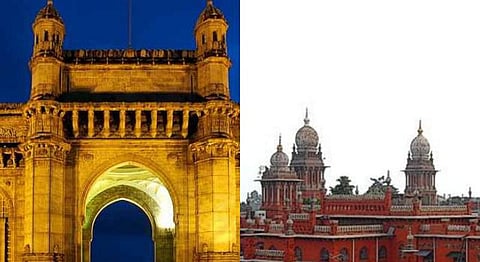
- HOMEGROWN WORLD
- #HGCREATORS
- #HGEXPLORE
- #HGVOICES
- #HGSHOP
- CAREERS
- ABOUT US
- CONTACT US

One of the biggest achievements of Indian civilization is said to be its architectural empire. Centuries of socio-economical and geopolitical transitions have manifested into architectural specimens bearing traces of mass expressions and different schools of architecture.
A stamp of different periods and dynasties, the Indian map is considered a complex network of magnificent monuments that are a testament to the substantial influence of the country’s history.
From the rock-cut temples of Mahabalipuram in South India to the Mughal minarets in the capital, there’s much to be said about the vast diversity that shapes our design consciousness. Perhaps the most prominent style of architecture is regarded to be the one developed during the colonized era.
The British occupation gave rise to a new style of architecture primarily known as the Indo-Saracenic architectural movement. The word Indo-Saracenic finds its origin in ‘Saracen’, an archaic name for Muslims used by the British.
Refusing to be limited to strictly Hindu or strictly Islamic, the colonial architecture movement emerged as an effort to merge British and Indian aspirations and to show how the British tried to fit into the Indian milieu of great empires of the past.
The result? Grand public buildings consisting of Indian ornamental architectural elements mixed with the composition and spatial organization of imperial designs. It is Regarded as a stylistic hybrid movement that is most clearly evident in legislative offices, railway stations and boarding schools.
Distinctive characteristics of Indo-Saracenic buildings were mainly bulbous domes, overhanging eaves, pointed arches, vaulted roofs, domed kiosks, pinnacles, towers or minarets, harem windows, open pavilions and pierced open arcading.
The buildings of this era as opposed to the past empires were balanced in terms of their simple yet dignified construction that epitomized elaborative décor and modernization in equal parts.
“Diverse Hindu and Mughal architectural elements were combined with Gothic cusped arches, domes, spires, tracery, minarets and stained glass, in a wonderful, almost playful manner in this epoch.”
What can be seen as the advent of a secular structure being devised to sway away from the Hindu-Muslim divide, Indo-Saracenic monuments represented a marriage of Indian craftsmanship and Western self-glorification.
Some of the most renowned monuments of the Indo gothic style are Chatrapathi Shivaji Terminus with its domed roof and brightly coloured stained glass windows, Victoria Memorial in Calcutta, the famous Gateway of India designed by George Wittet and many more.
A century later, the remnants of the colonized past of our country find their traces in the architecture, artistic pursuits and historical heritage. It is imperative to garner interest and shoulder responsibility to conserve these timeless tombs of history from the noise of urban growth and to keep the historical heritage of the homeland alive.
If you enjoyed reading this, we also suggest:
